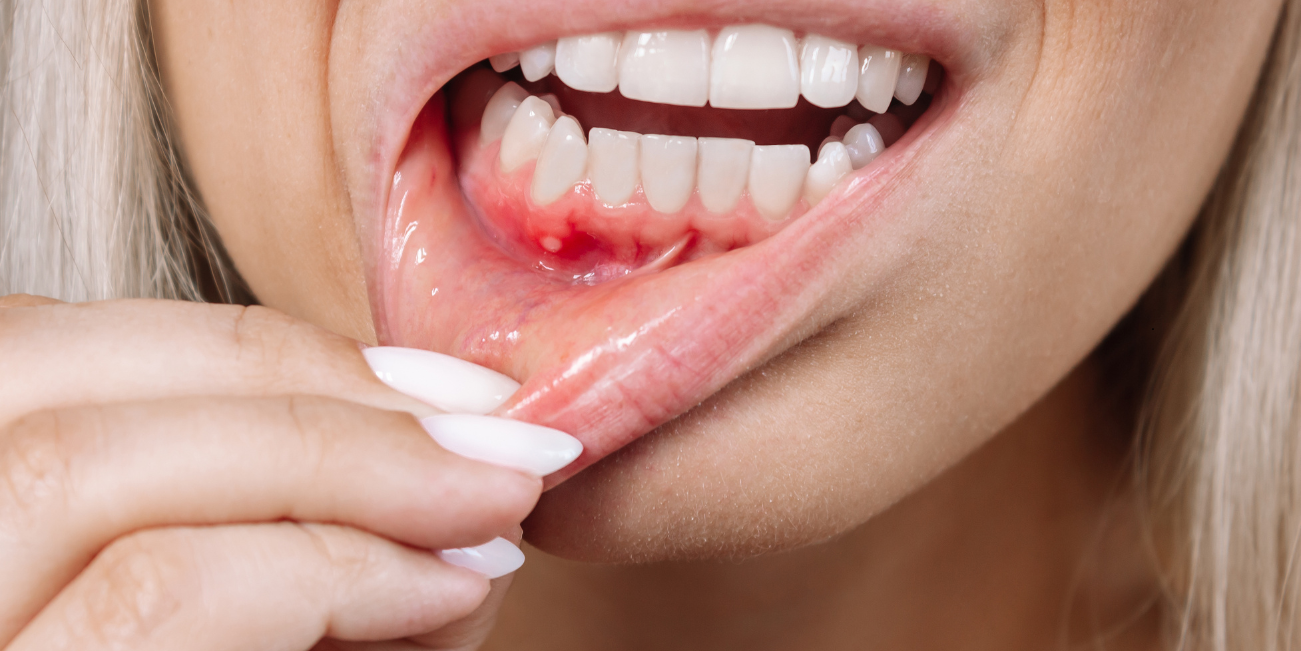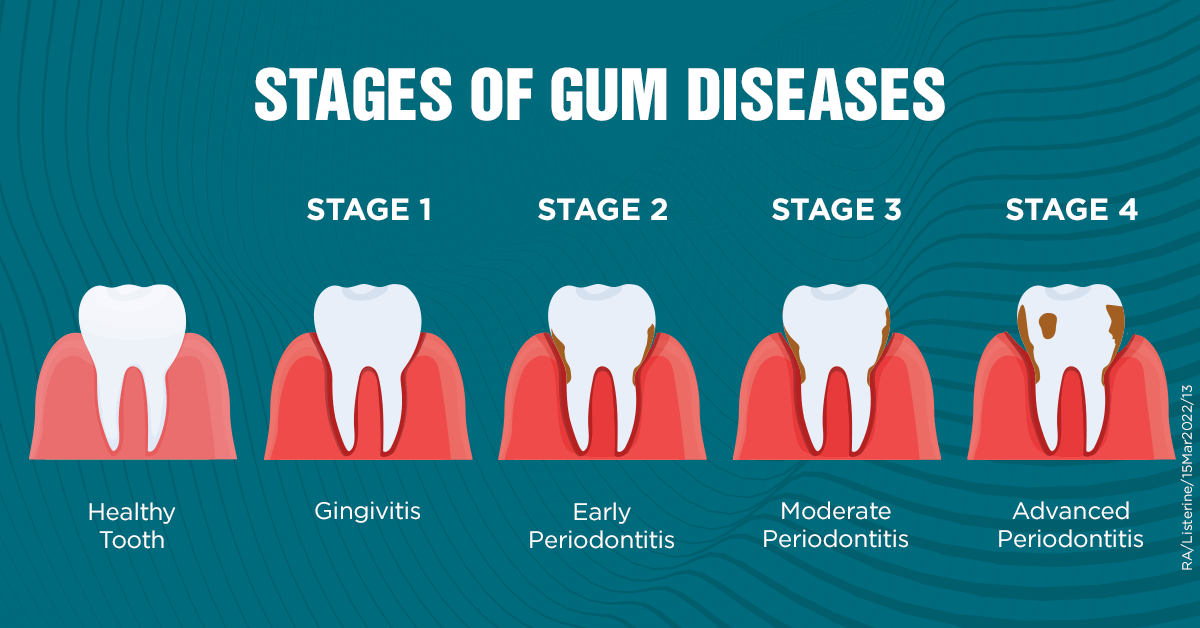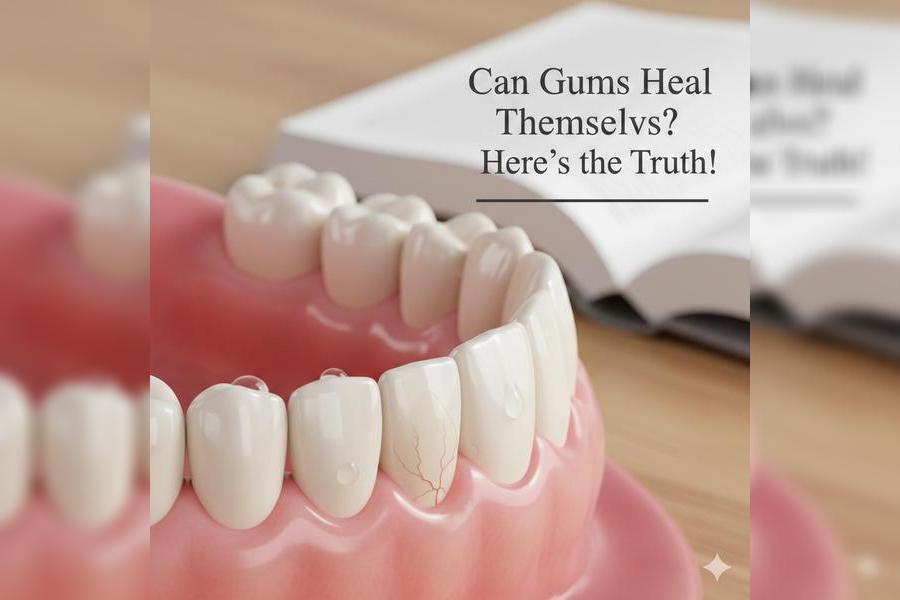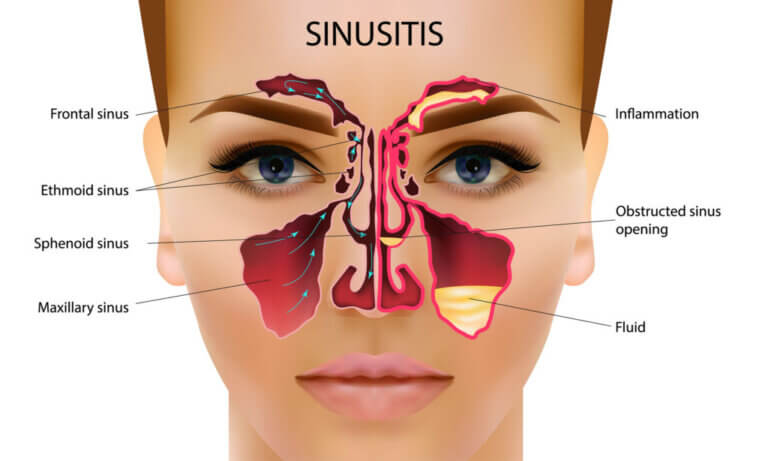Gum disease is not an overnight event, but the progression of moderate-level inflammation of gums to full destruction of oral health can occur more rapidly than most folk are aware. It starts with a few drops of blood with brushing the teeth, and before you know it, you are having bone loss, receding gums, and a very lethal condition. And here we go into one of the most crucial questions in preventive dentistry:
How long does it take for gingivitis to turn into periodontitis?
And whilst we are here, we will unwrap every nook and cranny about this gum journey: the initial indications, the time it takes to develop gingivitis, the risk factor, its natural remedy and most importantly how to prevent its onset before it becomes irreversible.
What Is Gingivitis?
The initial phase of the gum disease is gingivitis. It includes swelling of the gums which is normally brought about by the accumulation of plaque- a sticky deposit of bacteria that attach on your teeth.
Common symptoms include:
- Red or swollen gums
- Bleeding during brushing or flossing
- Bad breath
- Tenderness along the gumline
The positive news is? With adequate education and steps taken at the right time, gingivitis is perfectly reversible.
How Long Does It Take to Get Gingivitis?
The Onset Timeline
How long does it take to get gingivitis? Not much! The scatter film of bacteria carrying plaque can begin to form on your teeth only after several hours of the last time you brushed your teeth. When you miss brushing and flossing within 24 to 72 hours, the plaque is likely to transform into a rigorous mass known as tartar, which can only be dissolved by a dentist, as it is a huge amount of calcification. As soon as tartar is established, it serves as a home to bacteria which irritates the gums and causes gingivitis.
In general, if you go without proper oral hygiene for as little as 4 to 7 days, gingivitis symptoms like redness, mild swelling, and bleeding gums may start to appear. That’s right—just a week of neglect can invite early-stage gum disease.
Early Warning Signs
Watch out for the following early indicators:
- Slight gum swelling
- Occasional bleeding when brushin
- Subtle soreness or sensitivity near the gumline
- Foul breath that doesn't go away
At this stage, these signs may not be that significant but it is telling you that the war in your mouth against these bacteria has begun.
Who’s Most at Risk?
Some of the lifestyle factors and some health conditions accelerate the development of gingivitis. You are more at risk when:
- You smoke or use items containing nicotine
- Mouth dryness and dehydration due to consumption of medications
- Have fluctuations in hormones (e.g. during pregnancy, during the period)
- Have chronic illnesses such as diabetes or autoimmune diseases
- Forget about routine dental cleaning
What You Can Do Right Now?
The positive side is that gingivitis is reversible when detected at an early stage. It is all a matter of consistency:
- Clean twice a day with fluoride toothpaste
- Brush regularly with floss to break any plaque that occurs between teeth once a day
- Get a mouth rinse-essential-oil or antibacterial
- Shun sweet and carbohydrate based snacks which feed bacteria
- Cleanings should be done after 6 months at your dentist.
With these obvious indicators and action, you prevent gingivitis early and before advancing to a stage as serious as periodontitis.
What Causes Gingivitis to Worsen?
When gingivitis sets in, it is up to you what to do next, because it will either remain in control or progress to the next stage which is periodontitis. Missing a day of flossing is not the only part of it, it is about how disciplined we are to bother about our gum health in the long run. Here’s a deeper explanation of the main causes which aggravate this situation the most.

Poor Oral Hygiene Habits
Poor or lack of brushing and flossing permits the plaque to build-up along the gum line. With time, this plaque becomes hard and is transformed to tartar that could not be cleaned at home. There are more bacteria stuck in tartar and this is a favourable environment to develop inflammation and infection.
Diet High in Sugars and Starches
Sugary food materials and highly processed carbohydrates feed the bacteria that are found in the plaque. The more you consume them, the more the acidic waste that is made by the bacteria aggravates the gums, the more it irks and causes the gum tissues to erode much faster. The usual culprits include soft drinks, candy, pastries and even white bread.
Smoking And Tobacco Use
Nicotine decreases the supply of blood to the gums thereby limiting your body to fight off infection. Symptoms such as bleeding are also suppressed by smoking and that is why you might not realize that gingivitis is worsening until you realize that it is far gone.
Chronic Stress
Being under stress does not only harm your mind but your immune system also. Under constant stress, the body gets less effective in managing inflammation and your gums are at the risk of infection.
Underlying Health Conditions
Anything that causes diabetes, any autoimmune disorder (such as in pregnancy or menopause) will increase the sensitivity of your gums to disease. Such states reduce the ability of the body to heal thus when inflammation starts, it rises at a faster pace.
Skipping Dental Checkups
Most individuals tend to go to the dentist only in case of pain but gum disease itself does not always cause pain during its initial phases. By doing check ups regularly, the small signs are caught before they develop to irreversible issues.
Use of Harsh Oral Products
There are mouthwashes with alcohol and artificial contents that leave the mouth dry and tenderize gum tissue. No saliva is produced by a dry mouth and this implies that there are not so many natural antibacterial agents at work. To get back into balance, you can switch to the solution of plant-based oil with neem and clove oil that will help you to support your gums using natural means.
Why Does It Matters?
Ignoring these factors answers the very question we’re trying to avoid: How long does it take for gingivitis to turn into periodontitis? It can happen in weeks - or it can be stopped in its tracks. Recognizing and mitigating these aggravators is your best line of defense.
Early Warning Signs You Shouldn't Ignore
Gum disease is stealthy, it does not shout, it talks. This is the reason why early detection is crucial. Your mouth may be dropping hints and you do not notice since you are in the initial phases of the pain where you are not aware of the pain. This is how to follow what it lays down.
Bleeding Gums
Bleeding gums are the first indicator that something is wrong with the gums like when they bleed after brushing or flossing. Most individuals think that a bit of blood is normal. It’s not. The basic oral hygiene should not in any way make your gums bleed when they are not inflamed. The cause of this inflammation is normally due to an irritable gum line caused by plaque.
Puffy or Swollen Gums
The healthy gums are hard and pink. When they begin to swell; when they begin to shine; when they begin to get darker red, then you must begin to take notice of it. Plaque-induced bacteria are plenty within your mouth and your body is simply reacting to irritation and infection by swelling.
Persistent Bad Breath
It is not your typical morning fresh breath. Persistent bad breath which persists the whole day, regardless of the cleaning effect of brushing is usually a pointer of bacterial overload. The bacteria secrete compounds of sulfur which have a foul odor and are signs of more serious gum problems.
Gum Recession
Another sign is, if your teeth suddenly seem more long, then your gums are receding. Recession of the gums may leave the root exposed and make the roots sensitive to heat, cold and other stimuli as well as prone to decay and infections. It is not an appearance of something cosmetic, but it is a structural problem that requires immediate attention.
Changes in Tooth Alignment
Do you feel your teeth have moved or are becoming loose as they used to be, do you feel you have a change of bite or do you find it is tighter between some teeth when you floss? It might be an indication that bone loss has already set in. When this occurs, it is no longer the state of gingivitis but instead periodontitis.
Tooth Sensitivity
When you experience some jolt of pain when you take a swig of cold water or bite into something hot, do not wave it off. Hypersensitivity may be as a result of exposed roots and inflamed gums. The symptom comes along thick and thin with gum recession, which is also another red alarm you can never afford.
By tuning into these early signals, you can catch gum disease before it progresses. Left untreated, gingivitis quickly morphs into periodontitis, a chronic and destructive condition. When it comes to gum health, sooner is always better.
How Long Does It Take For Gingivitis to Turn into Periodontitis?
Understanding how gingivitis evolves into periodontitis is crucial for maintaining long-term oral health. While there’s no precise calendar date for when one turns into the other, experts agree on a general timeline, and it's shorter than most people think.

The Ticking Clock
Many people assume that gum disease takes years to become serious. In reality, gingivitis can start progressing to periodontitis in as little as 2 to 3 weeks if left untreated. Of course, that timeline isn’t set in stone. For some, it could take months to progress. But for others, especially those with compromised immune systems, poor oral hygiene, or underlying health conditions, the shift can be alarmingly swift.
What Happens During the Progression?
Initially, the inflammation is limited to the gumline. Plaque and tartar accumulate, causing redness, bleeding, and puffiness. If these symptoms are ignored, the bacteria begin to infiltrate deeper into the gum pockets. This leads to:
- Breakdown of the connective tissue
- Formation of deeper gum pockets
- Onset of bone loss
At this point, it’s no longer just gingivitis—it’s become early-stage periodontitis, which is no longer reversible, only manageable.
The Risk Factors That Accelerate Progression
Several factors can make gingivitis turn into periodontitis more rapidly:
- Smoking: Inhibits healing and reduces immune response.
- Diabetes: High blood sugar levels fuel bacterial growth.
- Poor oral hygiene: Inconsistent brushing and flossing allow plaque to thrive.
- Genetics: Some people are more predisposed to aggressive gum disease.
- Stress: Weakens the immune system, making your body less able to fight infection.
If more than one of these factors is present, the timeline for progression can shorten significantly.
Signs You’re Moving Toward Periodontitis
If you start noticing any of the following, you might already be in the danger zone:
- Persistent bleeding when brushing or flossing
- Gums pulling away from teeth
- Teeth feeling looser or shifting
- Increased tooth sensitivity
- Halitosis that won’t go away
Once gum pockets deepen beyond 3mm, you're entering the territory of irreversible damage.
When to Take Action?
Don't wait for definitive signs to act. The earlier you intervene, the better your chances of reversing the inflammation and stopping further progression. If it's been a while since your last dental check-up or cleaning, now is the time.
Adopt a disciplined home care routine and consider using natural antimicrobial solutions that support gum healing without irritating chemicals.
The bottom line: gingivitis can escalate quickly, especially if ignored. Don’t underestimate the speed at which inflammation can turn into chronic damage. Act early, and you can keep your gums healthy and your teeth right where they belong
Gingivitis vs. Periodontitis
|
Feature |
Gingivitis |
Periodontitis |
|
Reversibility |
Yes, with good care |
No, but can be managed |
|
Pain |
Mild or no pain |
Painful, especially when chewing |
|
Bone Loss |
None |
Yes |
|
Gum Pocket Depth |
1–3 mm |
4 mm and deeper |
|
Bleeding |
Common during brushing |
Persistent and severe |
|
Treatment |
Brushing, flossing, cleanings |
Scaling, root planing, sometimes surgery |
Risk Factors That Speed Up Gum Disease Progression
Some people are more prone to rapid progression. Here’s why:
- Smoking: One of the strongest risk factors for gum disease.
- Diabetes: High blood sugar feeds bacteria.
- Hormonal changes: Pregnancy and menopause affect gum sensitivity.
- Immunodeficiency diseases: HIV/AIDS, leukemia, etc.
- Genetics: Some families have a predisposition to aggressive periodontitis.
Add poor oral hygiene to the mix, and you’re accelerating the timeline on how long it takes for gingivitis to turn into periodontitis.
Can Gingivitis Be Reversed?
Absolutely. The moment you notice symptoms, take action.
Do this:
- Brush your teeth twice daily with a soft-bristle toothbrush
- Floss once a day to remove plaque between teeth
- Use an antimicrobial mouthwash
- Get a professional dental cleaning every 6 months
Why Should You Act Quickly?
Once periodontitis sets in:
- Gums start to recede
- Teeth may loosen or fall out
- Jawbone deterioration occurs
This isn’t just about oral hygiene. Gum disease is linked to:
- Heart disease
- Stroke
- Alzheimer’s
- Rheumatoid arthritis
So don’t gamble on time. The sooner you treat gingivitis, the better.
Natural Gum Health Support: What to Look For
Nature provides powerful tools to help prevent or slow gum disease progression.
Some of the most potent natural ingredients include:
- Neem Oil: Long used in Ayurvedic medicine. It's antibacterial and anti-inflammatory.
- Clove Oil: A natural analgesic and antimicrobial. Relieves pain and kills bacteria.
- Omega 3 & 9 Oils: Help reduce gum inflammation and support cell regeneration.
A well-formulated, all-natural oral care solution infused with these ingredients can significantly strengthen your gum health.
A Natural Remedy That Works: No Compromise
If your gums bleed when brushing, feel tender, or your teeth are sensitive to hot or cold temperatures, it may be time to take your oral care seriously.
Thousands have switched from synthetic oral products or nicotine pouches to a restorative gum care solution that combines neem, clove, and omega-rich oils - all designed to support gum health naturally.
You don’t have to choose between prevention and comfort. A good plant-powered oil can:
- Fight bacteria
- Soothe inflammation
- Encourage tissue healing
- Replace harsh chemical treatments
No marketing gimmicks. Just clean, simple, effective gum health.
What Happens If You Ignore Gingivitis?
Here’s the breakdown of the dangers:
- Persistent bleeding
- Chronic bad breath
- Loose teeth
- Painful chewing
- Tooth loss
- Expensive treatments like scaling, root planing, or surgery
You also increase your risk for systemic health problems. Research shows that the inflammation from periodontitis can spread beyond your mouth.
Frequently Asked Questions (FAQs)
1. How long does it take for gingivitis to turn into periodontitis?
In some people, as little as 2 to 3 weeks. Others may take months, depending on personal habits and health status.
2. Can gingivitis go away on its own?
Not usually. It requires brushing, flossing, and possibly professional cleaning.
3. Is periodontitis curable?
No. It can only be managed, not reversed. Early treatment is key.
4. What’s the best natural treatment for gingivitis?
Products with neem oil, clove oil, and omega-3/9 oils are highly effective.
5. Is gum disease connected to overall health?
Yes. It’s been linked to heart disease, Alzheimer’s, and more.
6. Can I use a natural alternative instead of Zyns?
Absolutely. Many people use all-natural oil-based remedies that offer gum support without the side effects of synthetic pouches.
Outlook
Gingivitis may seem harmless, but don’t let the early stage fool you. How long does it take for gingivitis to turn into periodontitis? Sometimes only a matter of weeks. But with the right habits, natural support, and early action, you can stop the clock and reclaim your oral health.
If you're experiencing signs like bleeding, pain, or sensitivity, it's not too late. Reinvent your daily oral care with a natural oil solution - such as the The Goodbye Company Gum Disease Oral Solution that doesn't just mask the symptoms - it supports your gums where it counts.













